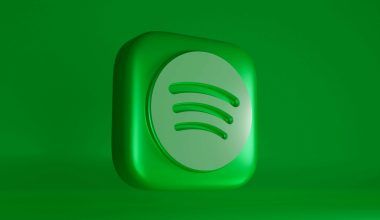Are you a musician dreaming of sharing your music with the world while earning an income? The good news is, with the rise of digital stores, it’s easier than ever to monetize your music and turn your passion into a sustainable career. Whether you’re new to the music industry or looking to refine your strategies, this guide will walk you through the entire process step-by-step. By the end, you’ll know exactly how to monetize your music on all digital stores and maximize your earnings.
Why Should You Monetize Your Music on Digital Stores?
Digital stores like Spotify, Apple Music, Amazon Music, and Tidal have become the go-to platforms for music lovers worldwide. They not only help you reach millions of listeners but also provide a way to earn royalties and showcase your artistry. When you monetize your music, you’re creating an opportunity to:
- Earn passive income
- Build your fanbase globally
- Establish your presence in the competitive music industry
Let’s dive into the steps you need to follow to make this happen.
Step 1: Create High-Quality Music
Your music is your product, so it needs to be exceptional. Listeners are drawn to songs that evoke emotions, tell stories, or provide a memorable experience.
- Focus on Production: Invest in good equipment or collaborate with professional producers to ensure top-notch sound quality.
- Polish Your Tracks: Use mixing and mastering services to give your songs a polished, professional finish.
- Think About Your Audience: Create music that resonates with your target listeners, whether it’s pop, indie, or electronic.
Remember, high-quality music is more likely to get attention and generate streams, which directly influences your earnings.
Step 2: Choose a Digital Distributor
To monetize your music on digital stores, you’ll need a distributor. A digital distributor acts as a middleman between you and the platforms, ensuring your music is uploaded correctly and reaches your audience.
- Top Distributors to Consider:
- DistroKid
- Deliver My Tune
- CD Baby
- Amuse
- Ditto Music
Each distributor has its own pricing model, services, and payout structure. Choose one that fits your needs and budget.
Step 3: Prepare Your Tracks for Distribution
Before uploading your music, ensure you have everything ready:
- Audio Files: Use high-quality formats like WAV or FLAC.
- Cover Art: Your artwork should meet the specifications of digital stores and represent your music’s vibe.
- Metadata: Include accurate song titles, artist names, album names, and genres. This information helps platforms categorize your music.
- ISRC Codes: These unique identifiers are essential for tracking royalties. Most distributors provide ISRC codes if you don’t have them.
Step 4: Set Up Your Artist Profile
An engaging artist profile can make a huge difference in attracting listeners. Most digital stores allow you to claim and customize your profile.
- Spotify for Artists: Use this platform to update your bio, add photos, and share playlists.
- Apple Music for Artists: Provide insights about your music performance and customize your artist page.
- Amazon Music for Artists: Access analytics and update your profile to connect with fans.
Your artist profile is your online business card—make it compelling!
Step 5: Upload Your Music
Once your distributor is selected and your tracks are ready, it’s time to upload your music. Follow these steps:
- Log in to your distributor’s platform.
- Add your audio files, metadata, and cover art.
- Set the release date. Aim for a release at least 2-4 weeks ahead to allow for proper promotion.
- Specify the platforms where you want your music available.
Your distributor will handle the rest, ensuring your music appears on all major digital stores.
Step 6: Promote Your Music Before the Release
Promotion is key to getting noticed. Even the best music can go unheard without the right marketing efforts.
- Use Social Media: Share teasers, behind-the-scenes content, and countdown posts on platforms like Instagram, Facebook, and TikTok.
- Email Your Fans: Build an email list and notify your subscribers about your upcoming release.
- Collaborate with Influencers: Work with content creators who can introduce your music to their followers.
When you create a buzz before your release, listeners will be more likely to stream your music as soon as it drops.
Step 7: Monitor Your Performance
After your music goes live, track its performance to understand what’s working and where to improve.
- Analytics Tools: Most platforms provide insights into your streams, listeners, and demographics.
- Adjust Your Strategy: Use this data to tweak your promotion efforts and target specific audiences.
For example, if you notice more streams from a particular region, consider tailoring your content to appeal to those listeners.
Step 8: Collect Your Royalties
As your music gains streams and downloads, you’ll start earning royalties. Here’s how it works:
- Mechanical Royalties: Earned from streams and downloads.
- Performance Royalties: Generated when your music is played publicly.
- Sync Royalties: Paid when your music is used in films, TV shows, or advertisements.
Your distributor will typically collect royalties on your behalf and transfer them to you. Make sure to regularly check your earnings and ensure everything is accurate.
Step 9: Expand Your Reach with Playlists
Playlists can significantly boost your streams and visibility.
- Submit to Editorial Playlists: Platforms like Spotify allow you to pitch your music for curated playlists.
- Create Your Own Playlists: Showcase your music alongside tracks from other artists to attract followers.
- Engage with Independent Curators: Reach out to playlist owners who feature your genre.
Being featured on popular playlists can skyrocket your streams and help you earn more.
Step 10: Keep Creating and Engaging
Monetizing your music is not a one-time effort. To maintain and grow your earnings:
- Release Music Consistently: Regular releases keep your audience engaged.
- Engage with Your Fans: Reply to comments, share updates, and build a community around your music.
- Experiment with New Platforms: Explore emerging platforms and opportunities to expand your reach.
The more active and involved you are, the more opportunities you’ll have to monetize your music.
Conclusion
Monetizing your music on all digital stores may seem overwhelming at first, but breaking it down into manageable steps makes the process achievable for any artist. From creating high-quality tracks to choosing the right distributor and promoting your music effectively, every step is essential to your success. Remember, with dedication and a clear strategy, you can turn your passion into a profitable career. So, start today and take control of your musical journey by monetizing your music on all digital stores!
For further reading, explore these related articles:
- How to Get Money From YouTube Videos
- Understanding DistroKid Record Label
- Exploring the World of Indie Music
For additional resources on music marketing and distribution, visit DMT Records Private Limited.






